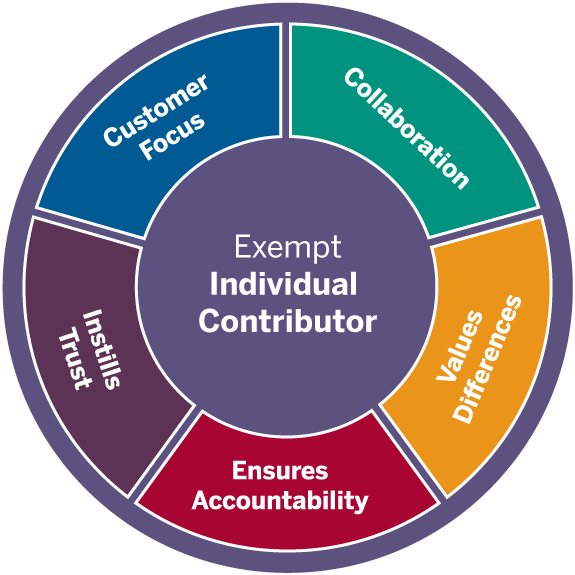Exempt Individual Contributor: Advanced
Manages Complexity
Making sense of complex, high quantity, and sometimes contradictory information to effectively solve problems
Success today depends on figuring out the best solution to difficult, high-stakes issues. Most people are smart enough to solve problems effectively, but they don’t always go about it the right way. They don’t define the problem carefully, or rush to conclusions. At the other extreme, they over analyze and don’t try anything. You need to gather data from diverse sources, sort through it, and distill it to simpler understandable themes. Evaluate the pros and cons of potential solutions. Test out the best options.
You show this competency when you:
- Ask the right questions to accurately analyze situations
- Acquire data from multiple and diverse sources when solving problems
- Uncover root causes to difficult problems
- Evaluate pros, cons, risks, and benefits of different solutions
How to develop this competency:
Gather relevant information
First, get organized. What information already exists? What else do you need? Shine a light on the “FOG” by differentiating Facts, Opinions, and Guesses. Be willing to hunt for useful information. Some information is relevant and some is noise. Sift through and find the good stuff, then supplement it with surveys, analytics, or field studies. Weigh the potential benefit of knowing something against the cost of finding it out. Learn to discern when enough information is really enough.
Consult diverse resources
Many try to do too much by themselves. Even if you think you have a decent solution, ask other people for input just to make sure. Tackle sticky problems with a diverse task force: people with different experiences and perspectives. A key way to ensure others share information with you is to make it a habit to share yours with them. Tap into experts and novices. You may find that it’s the people who aren’t direct experts in the topic that offer the most innovative solutions.
Use more problem solving tools
There are all kinds of tools you can use by yourself or in collaboration with others. Here are two examples:
- Depict a complex problem visually: separate its components and cluster similar aspects. Use flow charts, mind maps, or sticky notes to show relationships or to see if a different order would help make sense of things.
- Devise worst case scenarios: going to extremes sometimes suggests a different solution. Take the present state of affairs and project it into the future to reveal how and where the system may break down.
Learn more:
- Book: Influencer: The Power to Change Anything by J. Grenny and K. Patterson
- Article: Root Cause Analysis: Tracing a Problem to Its Origins
- Video: Ted: Simplifying Complexity
- Video: How to Solve a Problem in Four Steps
- LinkedIn Learning: Manages Complexity course collection
- LinkedIn Learning: Systems Thinking

Exempt Individual Contributor
Page updated: December 2020
IU Human Resources
Contact Us
